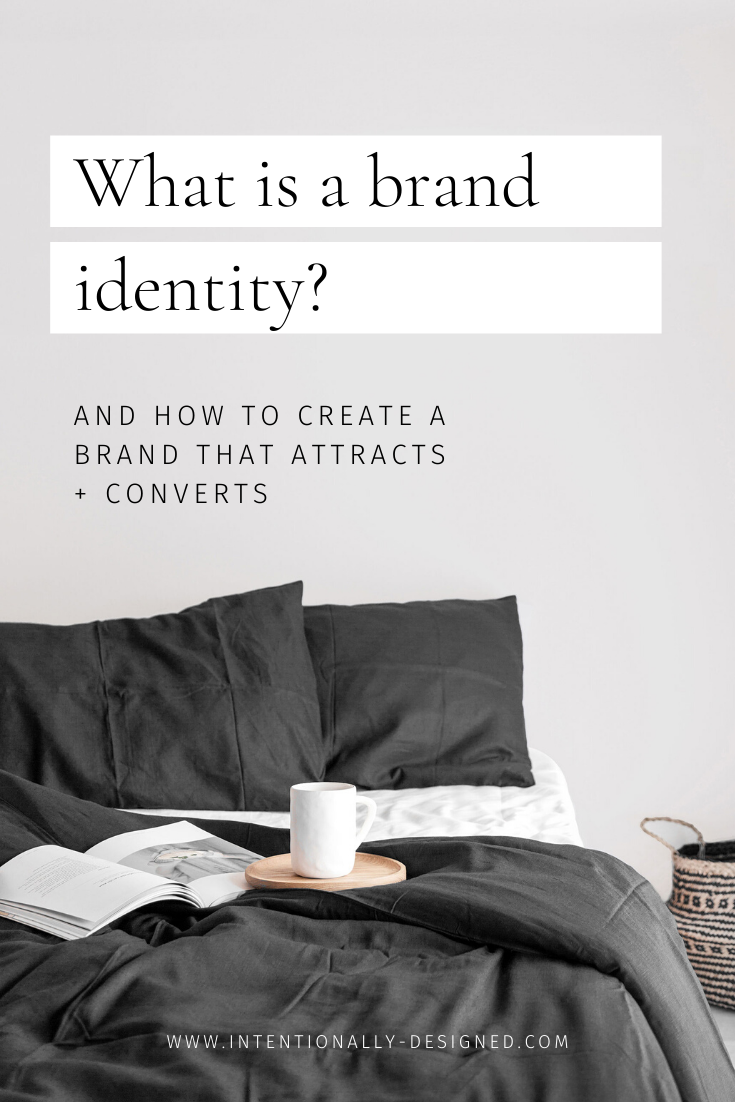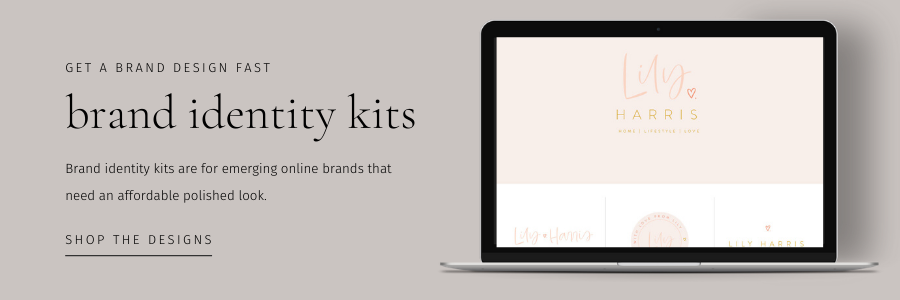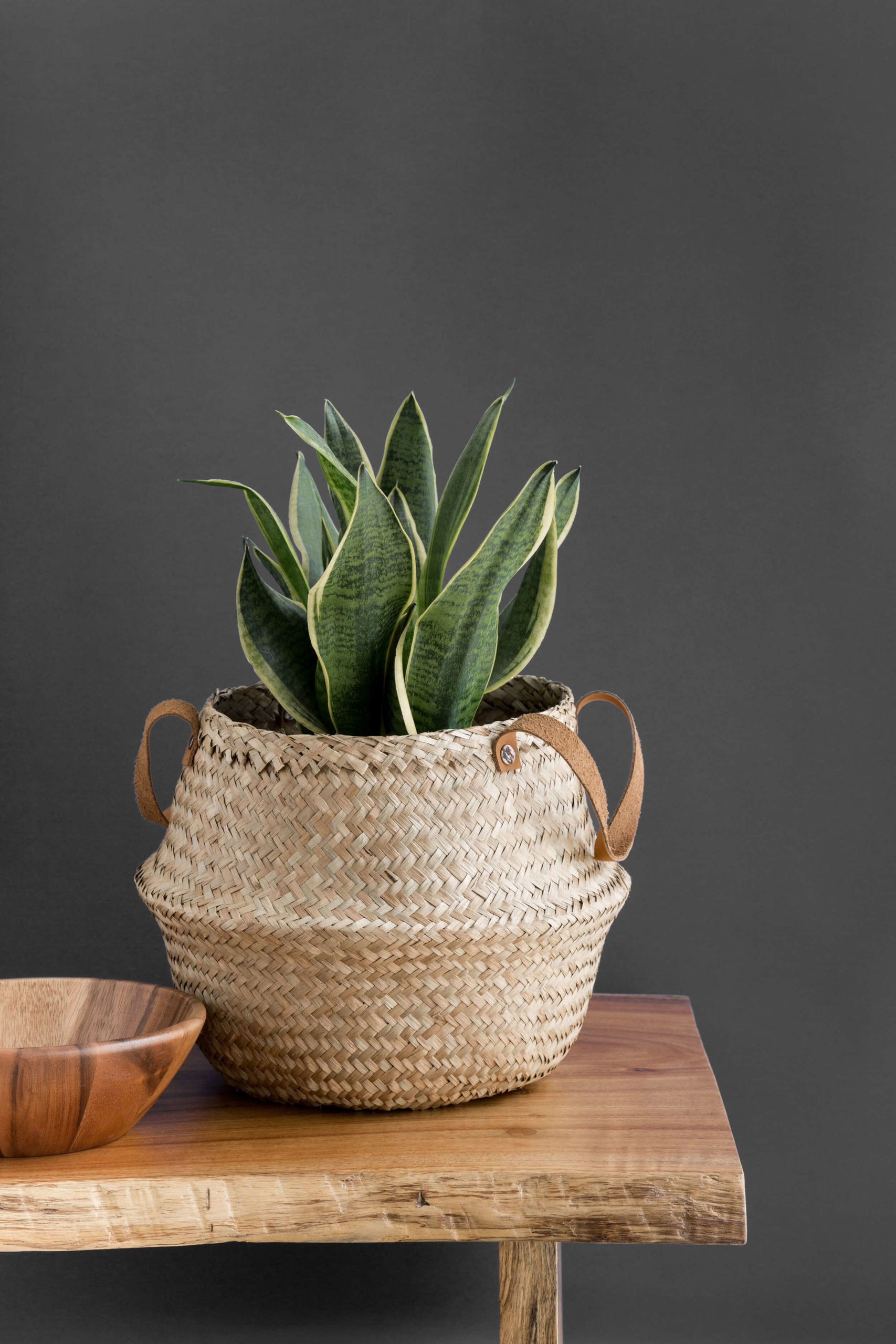The terms brand and logo are often used interchangeably and can easily be confusing. Although a logo is part of your brand, it isn’t the only part. And when you’re creating a full brand identity (which is the visual part of your brand), there is so much more to consider than just a logo. In fact, the logo is only a small piece of a bigger puzzle when building an intentional brand.
If you’ve ever been a little confused about how to build a brand and what exactly the brand identity piece of the puzzle entails, let’s break it down.
Here’s what you’ll learn:
- What a brand identity actually is
- The 3 different levels of brand identity evolution
- The components of a brand identity
- How to use your brand identity to attracts + convert
What is a brand identity?
Your brand leaves an impression on your audience long after you’ve connected with them. Brand identity is the process of shaping that impression. It’s how you present your brand to them so that they understand what you do and how you can serve them.
Simply stated, our brand’s outward appearance gives others an idea of what they can expect from us. All of your identity elements work together to create the first impression that people will create for themselves. But it goes much deeper than the surface-level visual components that you see.
A brand identity is the personality of your business and a promise to your customers. It’s an extension of your brand strategy that both visually and verbally communicates that strategy to your audience. It is how you present those ideas formed from your strategy and bring them to life.
Your brand identity serves a powerful purpose when it comes to your brand as a whole. People will remember your brand as they see it and interact with it, so you want your visual and verbal brand identity to be on point at all times.
This will help them get not only a good perception of your brand but also the right one. On top of that, they will be more likely to remember and refer your brand if they have a good impression and interaction with it.
The 3 different levels of brand identity evolution
Although most people jump straight to this step when building a brand, it is actually the second step of the brand-building process. Before you can create an effective and intentional brand identity, you must first develop your brand strategy.
Then, you’ll have a much better foundation on which to build the visual and verbal components of your brand, and ultimately they will work better if they are created with the right strategy behind them.
On top of that, there are 3 different levels of brand identity development that can happen as your brand grows and evolves. When you are first starting out, you want to focus more on developing and defining a clear and consistent brand style. This will act as the identity of your brand while you get the ball rolling on your business as a whole.
Once you’ve developed your business more, you’ll have a better understanding of what your brand identity should look like, and then you can graduate to semi-custom brand identity or starter brand. This will give you an elevated look without the huge price tag and allow you to establish even stronger roots for your brand.
The third level of brand identity development happens once you’ve been in business for a while and have a deep understanding of your brand. At this stage, you can work directly with a strategic brand designer to develop a solid brand identity for your business that includes the custom bells and whistles that you need at this level.
Elements of a brand identity
As you build your brand identity at each level, you’ll want to consider the two main components that make up a strong brand identity.
More than just a logo, a brand identity is made up of two components: a visual identity (i.e., logo, color palette, typography style, photography style, graphic elements) and verbal identity (i.e., language, tone, manner, voice).
Let’s break those down a little more and talk about what is included in each of those.
Visual components
The visual elements of a brand are the things that you see. These are typically the parts of your brand that people will see first, engage with most, and remember, so it’s key that these are accurately representing your brand. Here are some of the main visual components of your brand identity:
-
Logo
-
Logo variations
-
Colors
-
Type
-
Icons and marks
-
Patterns
-
Photos
Verbal components
After someone is introduced to and intrigued by your brand visually, they will then be led to the verbal components of your brand. Although the visual pieces are very important (design holds a lot of power here), the verbal elements are the pieces that will really connect with someone on a deeper level.
This is how you actually communicate with them and how you build that key customer relationship with them. These are all elements that you defined more specifically in your brand strategy, but this is when you put those in action. Here are some of the main verbal components of your brand identity:
-
Tone
-
Voice
-
Language
-
Mission
-
Message
-
Positioning
-
Personality
*If you’re not sure what any of these are, check out the list of brand and website terms explained*
When you bring all of these elements together you create a cohesive and powerful brand that will more effectively work for your business.
How to use your brand identity to attract + convert
Even with all the elements in place, there are a few extra things you can do to ensure that your brand identity is not only complete but memorable – which is really the end goal here.
You have the power to control how your brand is seen by the world. You can use color, type, written tone, and so many more visual and verbal elements as building blocks that can form a complete brand that accurately reflects you. But in order to build a memorable brand, you need to maintain consistency, infuse originality, and be super strategic as you create your brand identity.

These 10 things will take your brand to the next level and help you to attract and convert:
-
Pay attention to details + cohesiveness: Keeping things cohesive is key and it won’t go unnoticed if every detail of your brand is polished and well-thought.
-
Harness your brand advantages + unique value proposition: Figure out what people are doing and do it differently. By harnessing your unique selling point, you’ll be able to showcase how you are different than everyone else out there doing the same thing.
-
Tell your story + build connection: Stories are so important for building a connection with your people. They are able to put themselves into the story and see how things would play out for them.
-
Under-promise and over-deliver: Focus on your customer/client experience and make it stellar. You want them to expect something good and get something great.
-
Show empathy and authority: Let them know that you understand how they feel. Show them how you’ve been in their shoes and then tell them how you overcame the obstacle and why you’re the one to help them do it too.
-
Utilize a memorable purpose and personality: Having a strong purpose for your brand and an interesting personality will attract people to your brand that agree with your purpose or connect with your personality.
-
Add a personalized touch: By making things more personal and adding that special touch to your brand, people will be more likely to buy from you because they know you are there for them.
-
Focus on authenticity and visibility: No one will be attracted to your brand if they can’t find it so put yourself out there and increase your visibility. But fo so with an authenticity that they can see as genuine or they won’t trust you.
-
Credibility and trust: Speaking of trust, people will be more likely to buy from you if they trust you. Build your credibility by showing that you know your stuff and can get results.
-
Audit your brand regularly: Your brand is always growing and evolving. It is like a living, breathing thing and needs regular attention to make sure that things are aligned and working together for maximum impact. You’ll always be refining and strategizing to make your brand better as it evolves.
Recap
When you’re building an intentional brand, it’s best to start with the brand strategy so that your brand identity has some legs to stand on. If you do it in this order, your identity will visually and verbally communicate the right message to the right person which ultimately results in more growth and impact for your brand at every level of brand development.
Next Steps
Depending on where you are at in the overall brand-building process (if you don’t know, take the quiz), you can develop your brand identity by defining your signature brand style, getting a semi-custom brand, or working 1:1 with us to develop a custom brand identity.
save this article:
Enjoy this article and find it helpful? Pin this image on Pinterest so you’ll always have this info on hand!







